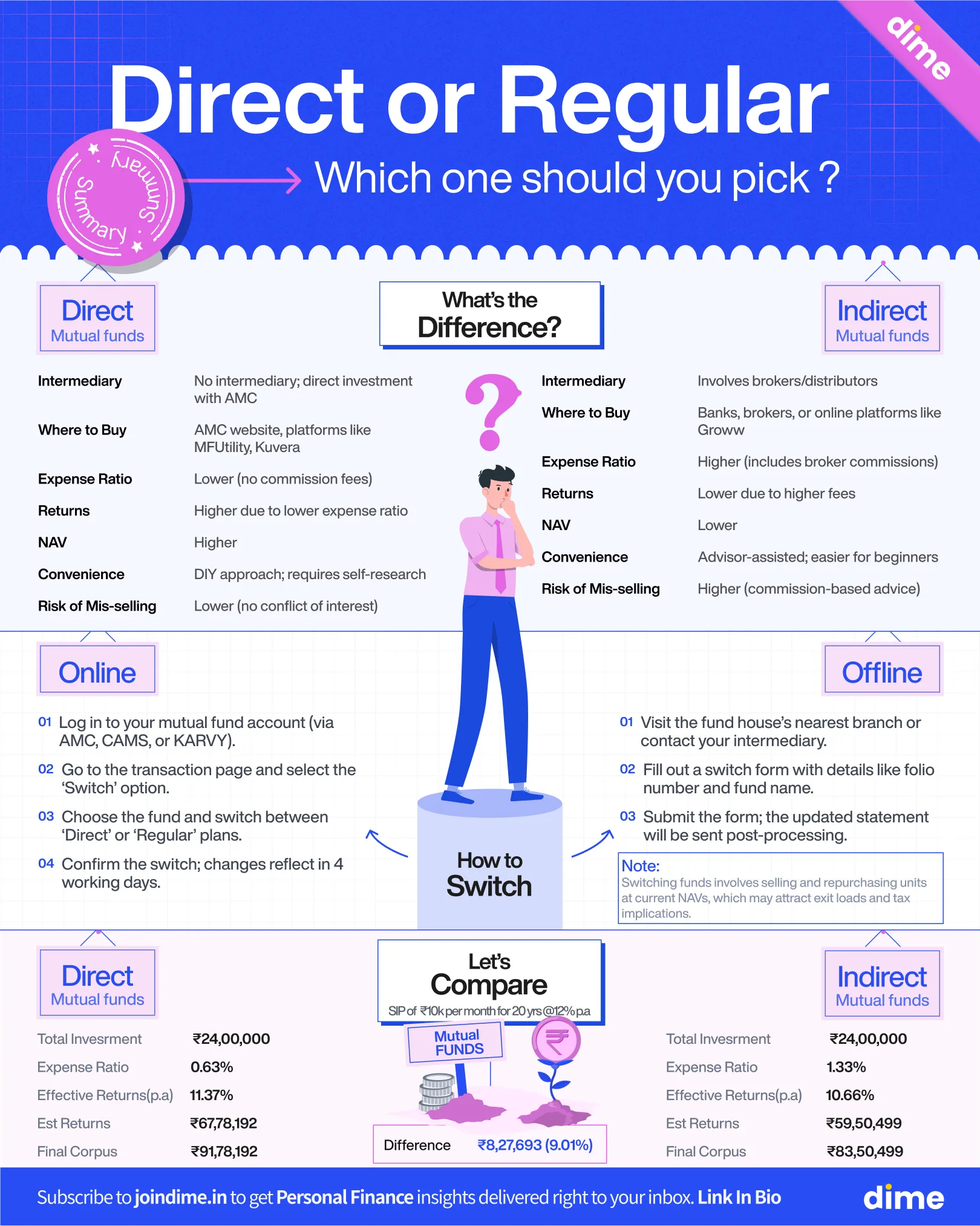
If you’re investing in mutual funds or planning to start investing, you would have probably come across two options: direct and regular plans.
Both have the same underlying investments, but they differ in costs, returns, and how you access them.
But what’s the exact difference?
Direct and indirect mutual funds differ in a lot of aspects.
Here’s how:

~add{6,blog_highlight-block}
Example
Diya was planning to invest in the Parag Parikh Flexi Cap Fund through a Systematic Investment Plan (SIP).
She got two options:
The difference in ER (0.7%) seemed low but the difference in the NAV (7.9%) was quite significant, so Diya decided to compare the two plans with an SIP of ₹10,000 per month for 20 years at an assumed market return of 12% per annum.
And she was shocked to know the difference!
This means she loses ₹8.27 lakh just because of a 0.70% higher expense ratio in the regular plan. The additional fee might seem like a minor difference, but it significantly impacts returns over time.
Can I switch between direct and regular funds?
Yes, you can easily switch between direct and regular funds.
Here’s how:
Online switching
Step 1: Log in to your mutual fund account (via AMC, CAMS, or KARVY).
Step 2: Go to the transaction page and select the ‘Switch’ option.
Step 3: Choose the fund and switch between ‘Direct’ or ‘Regular’ plans.
Step 4: Confirm the switch; changes reflect in 4 working days.
Offline switching
Step 1: Visit the fund house’s nearest branch or contact your intermediary.
Step 2: Fill out a switch form with details like folio number and fund name.
Step 3: Submit the form; the updated statement will be sent post-processing.
Note: Switching funds involves selling and repurchasing units at current NAVs, which may attract exit loads and tax implications.
Which one should you pick?
Choosing between direct and regular mutual funds depends on your knowledge, time, and comfort level.
If you’re confident about researching and managing your investments, direct funds are the clear winner. However, if you’re a beginner or prefer professional guidance, regular funds can be a good starting point as it comes with the benefit of advisors, who can help you navigate the market, choose the right funds, and manage your portfolio.
So, the question is–do you still need guidance or are you ready to let go of those extra fees?

~add{3,blog_highlight-block}
Summary
To make your life easier, we have summarised the above Read here. Hope you enjoyed it!


















